Summary Two
I must say the task when first assigned was quite overwhelming. It was necessary to delegate a director who perhaps had the best understanding of the task. Once Manika Naidoo was delegated as director, I found things fell into place rather well. She was able to collate our ideas into a proposal, which clearly depicted what we all needed to do in order to achieve our task.
I delegated myself the position of managing communication between the team. From day one, I collected my team members contact details and created a Facebook Group so we could have constant communication outside of class. I composed an Excel spreadsheet detailing everybody’s available times to meet vis-a-vis and communicate via Skype.
After discussion, I would make an announcement via Facebook, of when we were meeting next, and what work needed to be achieved by a particular date. Facebook’s group options permitted us to upload documents and indicate who had seen the posts.
Furthermore, we used Twitter and created our own hash tag (#Gloco13T4) as an additional source of communication. There is a saying: if you can’t explain something simply, you don’t really understand it. Twitter is fantastic for this by limiting you to 140 characters to get your message across. Using this platform forced members to deliver a succinct message and it would become clear to other members if the task was understood or not.
Initially setting up these communication platforms and collaborating with individuals on assigned work was one of my major responsibilities. I then helped with collating and editing team members’ work to compose our final document and prepared and delivered the presentation and the accompanying slide show.
We were quick to start with our research, and decided on ideas on how to communicate and promote T4 collaboratively and swiftly. This came easy to the group. What was difficult is that we had too many ideas we thought could be incorporated into the task. After careful discussion in our first meeting with Marius, we realized what we were choosing to use did not fit in with the project. We needed to edit and revise our proposal and ultimately, chop some of our members’ ideas out. Despite this, we all took a very mature and diplomatic approach to satisfy everybody; hence we were able to put our efforts fully into a finalized version. This was the YouTube campaign, which everybody, I believe, contributed fairly to.
The major troubles we had, and perhaps this came from constantly refining our project was some misunderstandings when team members needed to deliver their assigned task. Perhaps they didn’t understand it as well as the ones that delegated it to them, but it resulted in late submissions and revisions of their work done by either Manika or myself. This at times was irritating, not because I felt they did not pull their weight, but rather that they were submitted late, which delayed other work for the project. Alas, we got there in the end.
If this project was to be approached again, although the work loader may be larger, it is far easier to coordinate three people as opposed to five. I found myself one of the most flexible of the lot along with two others. The remaining members were not, in my opinion as willing to make the extra effort to meet up – a bare minimum of once a week. This became irritating, because three of us would be up to date and more familiar with the work, and the other two not. It made it harder to progress faster and further with the project. However, I will say they were very diligent in making sure they kept up to date with Facebook posts and tweets.
This project, and class in general has truly opened my eyes into what is available now for low-budget campaigns and company’s to make a name for themselves. How their message and persona can spread like wildfire via online platforms. We mention in our CSD what traditional campaigns would do if given such a task as we were. Social media would not be the crux of their crusade, but part of it in some way. I think we were very realistic in our approach, but also had we had an estimated budget, I think that may have influenced some of our decisions.
If confronted with another similar project, I would be pushing Twitter as a major platform for interaction with potential clientele and personas. The mere direct tweeting or “mentioning” of a Twitter user sparks interest and flatters the user, as we found when trying to gauge interest in The T4Story. I am more familiar with Facebook, but via this project have really come to learn and respect Twitter more and can see its potential and value in communications and marketing.
Summary Post
I am still becoming accustomed to emerging online platforms to create an identity. What I learnt from simply putting together a slide show presentation on my desired online identity has exposed me to various platforms that I can use in my other professional blog.
Take for example Storyify. An excellent way to keep track of my posts circulating on Twitter and collate them into one document to show prospective employers. The task of creating on online identity really pushed me to establish connections online, which I have been doing via LinkedIn and LiveMocha.
As mentioned in my presentation, I’m aiming to learn Dutch. Instead of going to face-to-face classes I’ve aimed to learn online with native Dutch speakers. I try to speak to them over the platform’s web-chat to improve my proficiency and aid them in their English proficiency. I’ve also gone further to become Facebook friends. Successfully engaging in conversations online with Dutch natives was the first barrier I needed to break. My next ambition is to establish a bilingual Twitter presence.
Twitter was always merely another social media platform for me, however I was proved wrong in this class. I understand that technology has become more integrated into modern learning and classrooms but employing platforms such as social media to educate, personally for me was quite baffling.
When Dr Marius and Professor Neal suggested we were going to engage in a Twitter debate on the globalization and whether it is a positive or negative issue, I didn’t think it plausible to have a well-researched argument via 140 characters. Skeptical, but now reflecting, this is a challenge of the modern era.
There is an idea that if you can’t explain it simply, you don’t really understand it. To be able to succinctly and concisely communicate ideas and arguments in a fast-paced world is what is demanded of my desired industry – journalism. With time and word limits, this is a new skill I can take to my career and as a bilingual journalist.
New Dutch Era: let it Bea the reign of Willem
This year Dutch citizens and enthusiastic tourists alike will gather on the streets and canals of Amsterdam in orange to celebrate the final Queens Day and welcome a new king to the throne.
Queen Beatrix announced in late January that she would abdicate in favour of her 45-year-old son, Willem-Alexander after 33 years of ruling.
“It is with the greatest of confidence, that I will hand over the throne on April 30 to my son, Willem-Alexander, Prince of Orange,” The Queen said in a televised announcement, stating it was time for the throne to be held by “a new generation.”
The Queen said her 75th birthday alongside the 200-year anniversary of the Dutch monarchy this year, were reason enough to step down.
The Dutch have not had a king for over a century now since William III who passed in 1890 – the same year the Dutch painter Vincent van Gogh committed suicide. Since then, queens have ruled The Kingdom of the Netherlands.
Those not familiar with the Dutch monarchy would find it somewhat strange that a king or queen can call a quits, if not scandalous. Lest we forget the Great Abdication of Edward VIII in 1936, who was forced to choose between the British throne and his lover Wallis Simpson.
In Britain, the monarch holds religious titles, hence we won’t see Queen Elizabeth II going Dutch. Sarah Bradford, author of Queen Elizabeth II, told The Telegraph that abdication is not what the British monarchy does and goes against the informal rules of their constitutional set-up.
So why exactly can a Dutch monarch resign from the position? Basically, the Dutch monarch holds a government job by inheritance.
According to Dr Susie Protschky, lecturer in Modern History at Monash University and Australian Research Council Postdoctoral Research Fellowship, abdication in the Dutch monarchy has become somewhat of a tradition, with Beatrix’s mother Queen Juliana abdicating in favour of her in 1980, and Juliana’s mother, Queen Wilhelmina, abdicated in 1948.
“It’s become more of a tradition in the Dutch monarchy. Rather than hang on until they die, the queens, because it’s all been queens in the 20th century, have decided that it’s more seemly to hand it over to their heir,” says Dr Protschky.
The current Dutch monarchy was only established in 1813. Prior to that, the Kingdom of the Netherlands did not exist.
“The Dutch were a republic before the 19th century, which was kind of unusual for Europe at that time,” says Dr Protschky, “They had princes but they had no king, and these princes were answerable to the Dutch parliament.”
“The House of Orange was a princely house which goes back to the 16th century. The Princes of Orange were hereditary princes who governed the provinces of the Netherlands.”
“It was a constitutional monarchy right from the beginning,” says Dr Protschky, “They didn’t come from an era where monarchies were autocratic and because the Dutch monarchy never abrogated to itself the power to rule by divine right, they always had a relationship with a parliament.”
This also explains why a crown will not follow Willem-Alexander’s succession. His coronation will involve inauguration at a meeting of the upper and lower houses of the Dutch Parliament, where he’ll promise to serve and uphold the country’s constitution.
There are certainly some who believe by now, that the Dutch monarchy should be abolished, considering its republican origins. Max Westerman, Dutch journalist and correspondent for RTL News from New York, openly stated in The Wall Street Journal on April 3 that it is time to “take leave of our monarchs,” subtly comparing the Dutch monarch to the leader of North Korea.
Despite questions of abolition and abdication, what is clear is that the Dutch monarchy has maintained popularity with its people.
No royal family is scandal free, and the Dutch monarchy is no exception. Media attention in the past has usually fallen upon concerns over the choice of spouses, however, the darkest cloud looming over the House of Orange was involvement in the Lockheed bribery scandals – a series of bribes and contributions by American aerospace company Lockheed between the late 1950s to 70s.
“They haven’t had any of the scandals around them in the way in recent years the way British monarchies have,” says Dr Protschky, “They’re very popular.”
The final Queens Day will surely be one for immense celebration as the Kingdom of the Netherlands embraces their new king, and their Dutch citizens, a “new generation.”
Relics of the Raj: a dying identity
I have been searching on a topic to contribute to an upcoming student magazine ‘The Melbourne Globalist’ on the topic of instability. I discussed this issue with a fellow classmate of mine and somehow we got off topic and engaged in a conversation about our cultural backgrounds. I told her I was Anglo-Indian, but she didn’t know what that was.
“Well” I said, “It’s a subculture that developed when the British ruled India and intermarried with Indian women. It goes by the father – the father must be of British descent. But it’s practically a dying race at them.”
“I think you have a topic now,” she said.
While researching for this particular article, I attempted to use Zygmunt Baumen’s paper ‘Identity in the Globalizing World’ hoping it would put into perspective the direction of the article I could take.
Zygmunt Baumen identifies that things are only noticed when they ‘disappear or go bust’ (2001:121). Arland Ussher and Vincent Vycinas similarly assert ‘the world as world is only revealed to me when things go wrong’ or ‘whatever my world consists of is brought to my attention only when it goes missing (2001:122).
The Anglo-Indian community is not very well known but in my research, the subculture itself gained media attention in the last few years on the BBC and New York times. The hooks of the story come from the angle of the culture dying out. See the links below:
http://www.bbc.co.uk/news/magazine-20857969
http://www.bbc.co.uk/news/world-asia-16492709
http://www.nytimes.com/2010/08/15/world/asia/15india.html?pagewanted=all&_r=0
The presence and colonisation of the British in India is a clear example of globalization. The solids of two different identities melted to form new solids (2001:123) however, Anglo-Indians as a byproduct of these solids is melting to into something entirely new and non-existent of the original.
I’m not here to debate whether the subculture’s dive into non-existence is necessarily a good or bad thing, but research aim to identify where this identity can place itself in society and history. I think the problem with this generation of Anglo-Indians, like myself is we are vagabonds as Baumen suggests thinking ‘Where could I, or should I, go? And where will this road I’ve taken bring me?’ (2001: 126).
Anglo-Indians have been intermarrying with others of either Asian or European descent, as the pool of spouses is limited within the subculture. Many have dispersed all over the Western World after India gained its independence in 1948. I myself have been in a similar situation when dating. And its because we know that this culture is not sustainable, hence a new identity needs to be selected because the previously chosen identity has been ‘withdrawn from the market’ (2001:126).
New identities can be freely chosen as Baumen points out, but a major question for this article I aim to write, and one I wish to discuss with potential interviewees, is what the new identity for the next generation of Anglo-Indians ie my children? We understand that the market is small and diminishing, but does the identity still have appeal or ‘seductive powers’ (2011: 126) to attract? And can the classification of the identity reconstruct to appeal?
LiveMocha: learning a language online
As part of my internship for my Masters course, I have been looking into possibilities abroad. After falling in love with the Netherlands after a recent trip to Europe, I have been looking for ways to learn Dutch proficiently.
A friend recommended a website called Live Mocha. It’s a global community where people learn their desired language. The learning material is aided by the your obligation to review other members work in order to have yours reviewed so you can continue to build your proficiency.
It runs similarly to Facebook, with a corresponding layout such as a profile picture, interests, friends, messages but with an actual purpose to learn and engage in conversation in the language you are learning.
We know globalization has changed the way we meet people (online dating/Facebook/Twitter) and business has been a prime example. We can organize meetings all over the world and attend from the comfort of our desk in our office, or home. I once had a job interview in Amsterdam at 6:00am in the morning to speak to a company in Melbourne. It was about 4pm their time. I put on some make-up and a nice shirt, but little did they know I was still wearing my pajama pants!
Despite this wonderful movement in communication for business, to work abroad in a foreign country, one needs to know how to communicate in their language. Dutch citizens are, in my opinion, proficient in English, having bilingual programs from the time they start primary school right up until secondary. But to write for their prestigious newspapers, alas, English won’t get me far. And they are eager to preserve their language. Only, 26 million people in the world currently speak it.
So what better way to learn the language than learning from real Dutch people online, absolutely cost free, and in turn, aid their English skills. Together as a community, we are increasing and sharing the knowledge of communication to become more engaged in each other’s cultures.
So far, my new friend Jan says, “Je uitspraak is goed tot zeer goed” (Your pronunciation is good to very good). Better get practicing!
Just for fun
I often find myself when I’m feeling idle scrolling through a particular website called 9Gag. The website is a popular image-based social media website which relies on users to upload comical images or memes.
I’ve had a particular addiction to it for some time. The interface itself is simple and the images are a usually a guaranteed LOL.
I was introduced to it by a Dutch friend who had been following it for some time. Users from all over the world can connect and engage in humour, whether it be political or entertainment based, or even social commentary, or just a cheap laugh.
What is brilliant about the website is the idea of shared humour and it’s ability to connect people without the necessary “adding” of friends or “following” on twitter. When Instagram started to climb its way up the social media ladder Facebook was overflowing with sepia, black and white or some other colour enhanced photo of food, with the hash tag #nomnoms or #yummy or #yolo or something along those lines. Honestly, I had to unsubscribe to a few of my offending Facebook friends as I couldn’t bare my feed becoming an online restaurant.
And then I saw this image:
Makes sense. I laughed and laughed. Because it was true. You can eat your food without Instagramming it. Clearly someone in the world was thinking along the same lines as I! And then the addiction started.
Here is another great response to the abundance of food images on Instagram:
But it’s not just my cynical humour that draws my attention. I do feel part of some kind of community. But what intrigues me more is how there is somebody in every corner of earth, who is consumes or enjoys the same media as myself and can has the same comments on the trends in social media.
9Gag’s slogan is “Just for fun.” Perhaps its naïve of me to think this, but yes, I believe a laugh, despite its organic nature, us enough to connect me to the world.
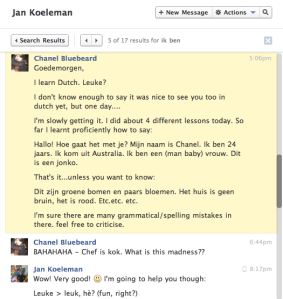
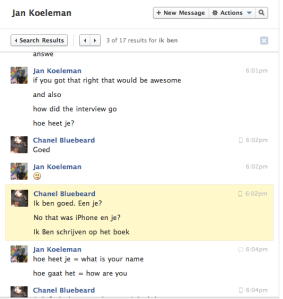
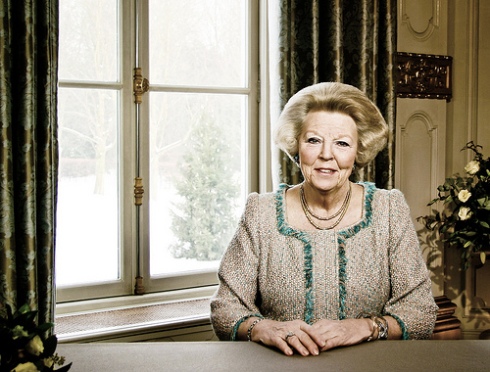
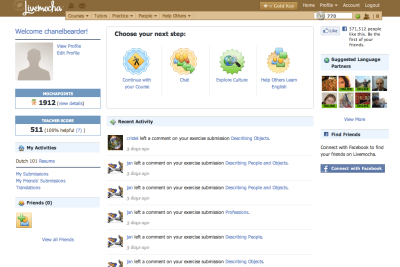
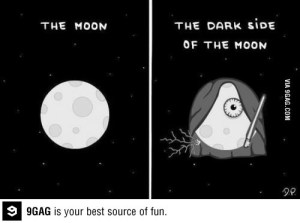
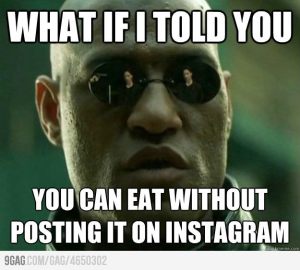
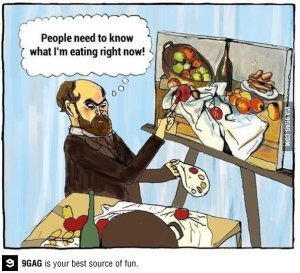
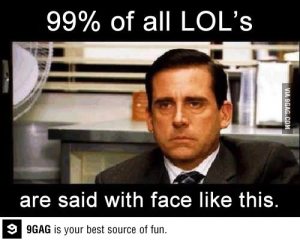
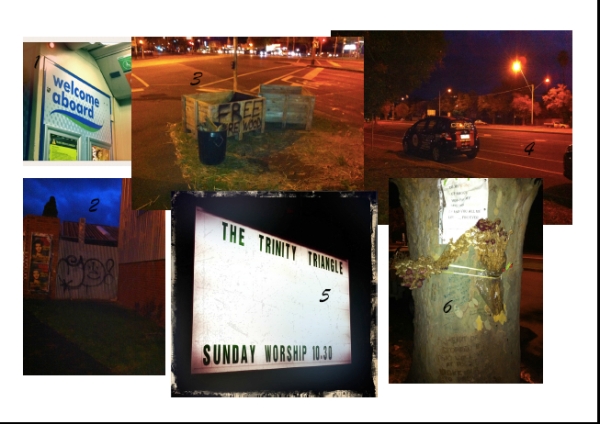
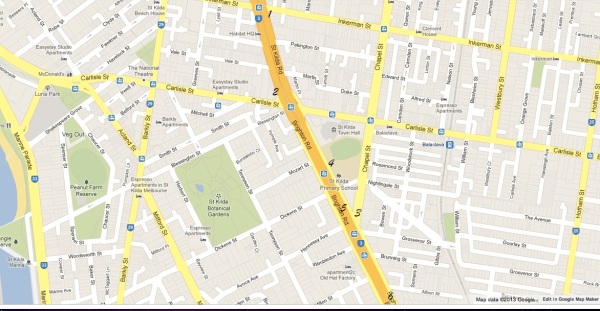
Recent Comments